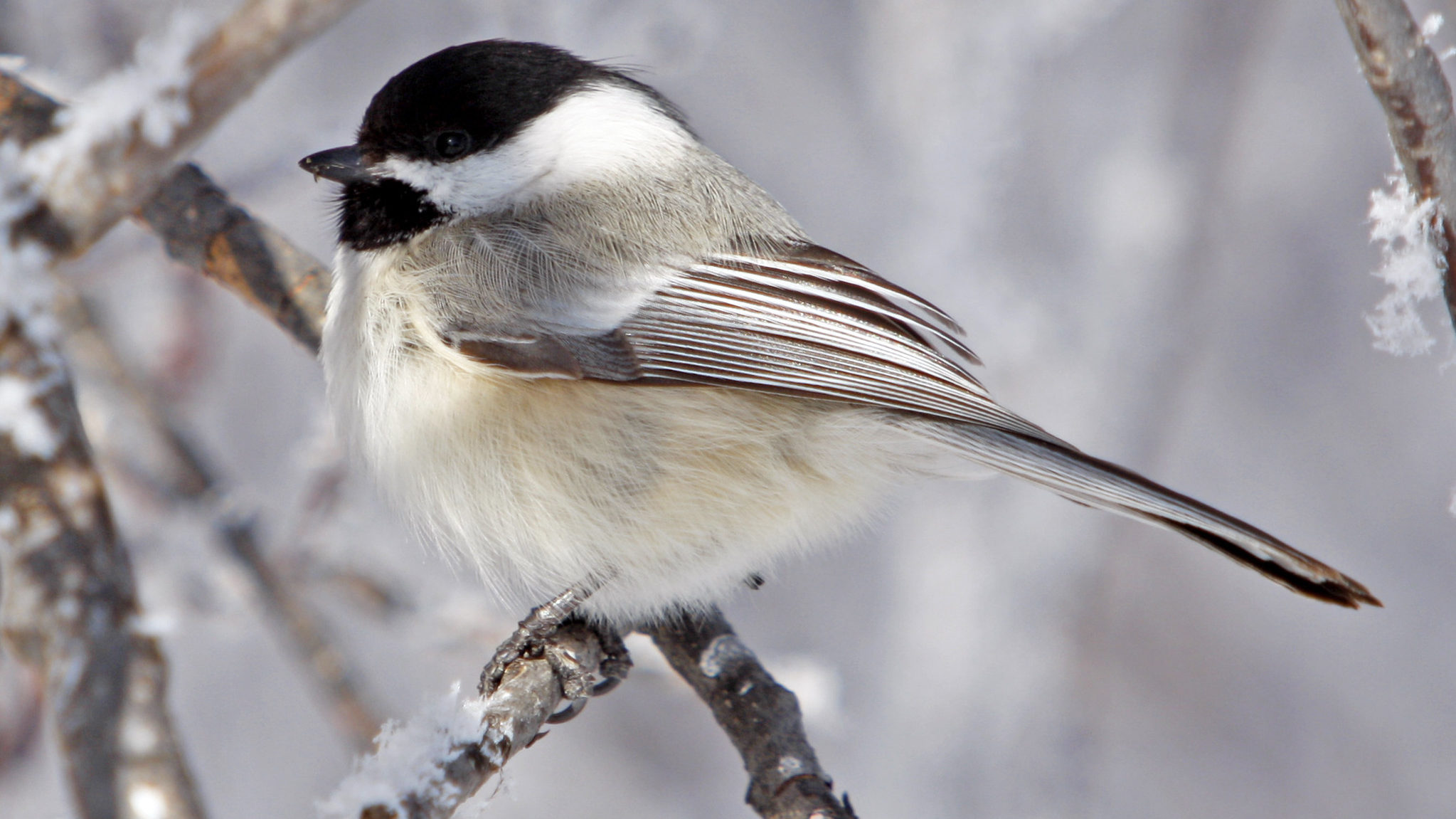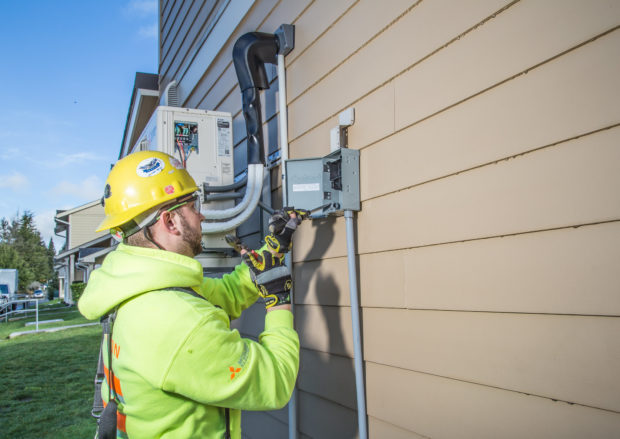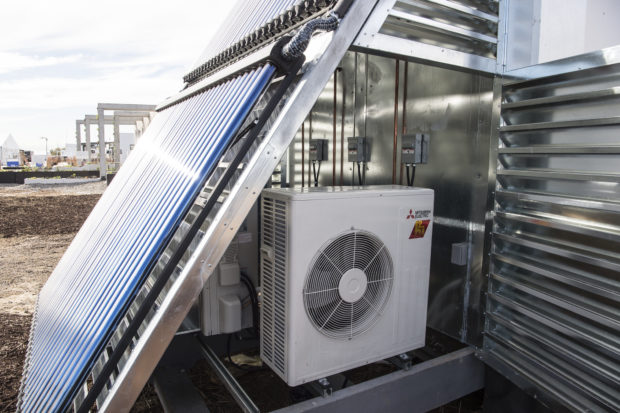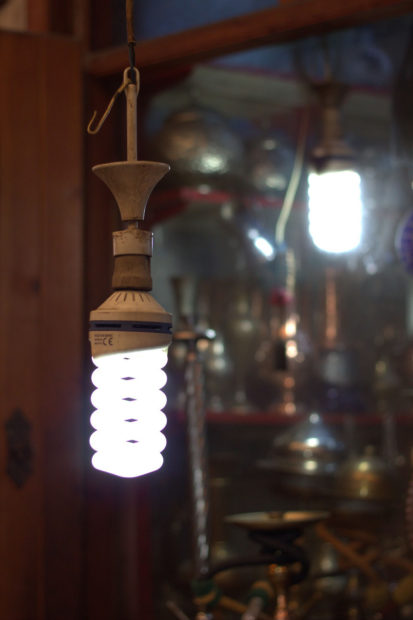We have much more to do and your continued support is needed now more than ever.
Energy Efficiency: A Win for Wildlife, Your Wallet, and Public Health

The tiny, round black-capped chickadee calls Pennsylvania and many other parts of the U.S. home. But recently, as climate change has turned the state hotter and wetter, these songbirds are moving north. Climate shifts are normal over long periods of geological time. But the amount of greenhouses gases we’re releasing into the atmosphere is already messing with which species of chickadees are most likely to survive in a warmer Pennsylvania.
Carolina chickadees, the black-capped’s close relative, are moving in from the south. While black-capped chickadees remain secure, the fact that such a common species is experiencing a speedy change in their habitat range tells us something important: Many species must quickly adapt to changed conditions in their habitats or find a new home elsewhere. Sadly, it is likely that some species will not be able to do so.
To reduce humanity’s impact on the natural world, we must invest in solutions that mitigate the impacts of climate change—and doing so will help save wildlife, create good-paying jobs, and support economic growth. Decarbonizing the American economy is a vital component of this strategy. One solution with major emissions reduction potential? Improving energy efficiency across America. Energy efficiency requires being strategic and economical with our resources: stretching the energy we already have to go further, using less of it, and transitioning to clean, renewable energy.
Energy efficiency involves many practices and technologies, such as:
- Upgrading heating and cooling systems
- Using energy-efficient lighting, appliances, electronics, and water heaters
- Installing and upgrading building control technologies
- Supporting installation of geothermal water heating systems
- Industrial combined heat and power
A win for the environment, economy, and public health
Expanding energy efficiency in our homes, businesses, and factories can create new economic opportunities for communities, meet new workforce needs, clean up the legacy of a polluting past, and improve human health.
For starters, energy efficiency investments create more jobs per dollar invested than traditional energy supply investments (like oil and gas). These investments last, too: Energy efficiency companies employ twice as many people as fossil fuel companies. And they lead to big savings for consumers and big reductions in harmful carbon emissions. With smart investments in energy efficiency, we could cut the emissions equivalent of 200 million passenger vehicles being driven for a year.
These changes would not only help climate-sensitive wildlife like eastern hellbenders and brook trout, but also would benefit public health. A 15 percent reduction in national electricity consumption for a single year would lead to many benefits, including saving up to $20 billion in avoided health harms, decreasing asthma episodes in children by 30,000, and preventing six premature deaths each day.

Photo by Marcela Gara, Resource Media 
Photo by Dennis Schroeder/NREL 
Photo by Yusuf Türker/ World Bank 
Photo by Marcela Gara, Resource Media
Energy efficiency helps advance energy justice
Historically, residential energy efficiency gains have been distributed unevenly across income levels. Energy burdens are often higher in communities of color and low-income households, where there is a greater percentage of income spent on residential energy costs. A 2016 study found that low-income households face energy burdens that are more than three times higher than higher-income households.
Energy burdens create difficult choices for low-income households, with 43 percent of people making less than $40,000 a year reporting forgoing education and healthcare opportunities to pay for utilities. Latinx and Black households are among the most impacted by inequitable energy burdens—they report making sacrifices to afford energy bills two and three times more often than white households, respectively.
Thankfully, energy efficiency offers a long-term, high-impact solution to this energy insecurity—and the negative health effects that accompany living in too-cold conditions.
NWF’s energy efficiency proposal: one solution for wildlife and people
While energy efficiency holds remarkable promise in reducing greenhouse gas emissions, other air pollution, and related health effects, we haven’t reached the full potential of energy-efficient products and processes. Many smart improvements to both residential and commercial buildings as well as industrial processes have been limited. Barriers like high upfront costs prevent these improvements from being widely adopted.
The National Wildlife Federation’s energy efficiency proposal would provide a solution to these cost barriers. The draft legislation directs the federal government to create a new Energy Efficiency State Revolving Fund (SRF) at the Department of Energy to help states finance energy efficiency projects across commercial, industrial, municipal, university, school, and hospital sectors, plus in housing.
With an initial federal investment, the Energy Efficiency SRF would fund projects in every state that could result in significant emissions reductions and energy savings, with local employment and environmental benefits.
Additionally, the proposal would reach communities that have not reaped the benefits of energy efficiency gains in the past, and which may have limited access to loan-based programs. Fifteen percent of the funds for states would be set aside for grants in rural and low-income communities. Five percent would also go towards tribal organizations and insular areas.
Investing in energy efficiency makes plain economic sense: It would create new, quality jobs, prioritize community health, and help conserve the base of our economy—the planet itself—for years to come.
Acting on energy efficiency takes people like you, add your voice to the conversation by urging your elected officials to protect people and wildlife today.























